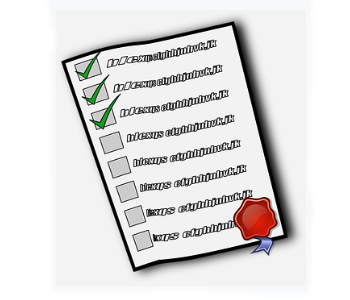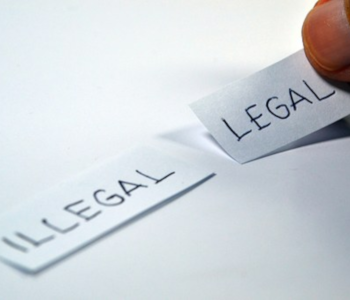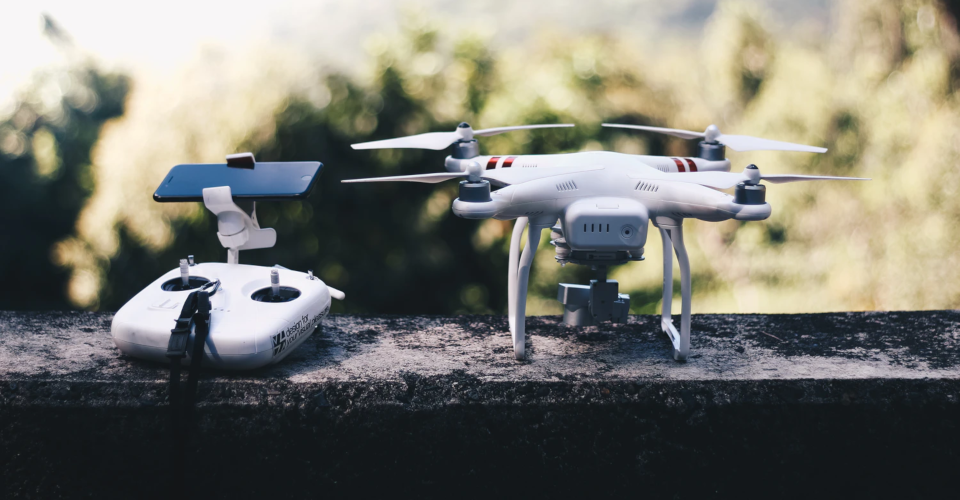8 Things to Know Before Buying Your First Drone
With drones getting more popular by the day, we have no shortage of readers looking for tips on buying their first-ever drones. We also understand how overwhelming the choices are. There are easily so much more beginner-friendly drones now compared to a few years ago.
In this article, we’ll be going over a few pointers that prospective buyers may want to consider before picking a drone.
1. What is it for?

The first question you need to ask yourself is why you’re buying a drone in the first place. Most people are drawn to drones either because of how incredibly fun they are to fly or as tools for aerial photography. Although you don’t necessarily have to choose just one or the other, it’s still a good idea to define your objective for buying a drone at the onset.
If you just want to learn to fly a drone but aren’t so concerned about its camera specs, then you have a wide range of inexpensive models to choose from. The Parrot Bebop is a fairly old model but provides good intuitive flight controls and a 1080p camera. Budget models from EACHINE and SNAPTAIN are also good options. These may not be top-of-the-line drones but they can help scratch that itch for experiencing what it feels to fly a drone.
If you’re looking for drones that come with professional-level cameras, you will have to set a slightly higher budget threshold. To make your aerial photos and videos look really good, it’s not enough that a drone has a good camera – it must also have a gimbal for mechanical stabilization. There are a lot of good choices out there. The DJI Mini 2 and Mavic Air 2 are both excellent options for beginners.
Racing is another area of drone use that has caught a lot of attention. It is less mainstream than casual flight or photography but has managed to gain a larger following recently. While most drone racing enthusiasts eventually end up building their own drones, there’s nothing stopping you from getting a pre-built drone if you’re still a beginner. The Arris X-Speed is a very popular choice for this purpose. Make sure to get a drone that’s fast, durable, and designed for FPV flight.
2. Budget

Although we’ve already touched slightly on budget, it’s still worth emphasizing. Drones are still considered big-ticket items. How much you’re willing to spend plays a big role in the type of drone you’re going to get.
Drones that cost less than $300 are what we consider “budget” drones. Within this price range, you’re unlikely to get a drone with a lot of smart features or one that comes with a mechanical gimbal. There are a few models that come with 4K cameras but most of them come with 1080p. That said, there are certainly a few gems in this price range if you look hard enough.
Drones that cost somewhere between $300 to $1000 have become the most popular in the last few years. These mid-range drones aren’t incredibly expensive but come with a lot of top-of-the-line features such as 4K cameras, mechanical gimbals, automatic camera modes, intelligent flight modes, and GPS navigation. If you can afford drones within this price range, they easily give the most bang for your buck,
Drones that cost above the $1000 threshold are those we consider premium models. These are drones typically used by professionals for photography or remote sensing applications. A beginner probably won’t be able to use a premium drone to its full potential, but it’s a good way to make sure that your purchase is future-proof. This can also be a worthwhile investment if you’re envisioning going into professional drone services eventually.
3. Drone registration

Legislation on drone use is probably something you’re not familiar with if you’ve never used a drone before. Drones aren’t just considered toys anymore. With hundreds of thousands of drones owned and operated in the US nowadays, the FAA considers them a vital part of national airspace subject to regulations.
At the federal level, the very first thing you need to know is the requirement for drone registration. All drones that weigh 0.55 lbs or more need to be registered with the FAA and marked with the corresponding registration number. Think of it as a physical license plate for your drone. This makes a drone traceable to its owner, hopefully discouraging more malicious drone use.
The registration requirement means that you cannot just fly your drone straight out of the box. Thankfully, the registration process takes less than 10 minutes.
If your drone weighs less than 0.55 lbs., then you don’t need to have it registered UNLESS you’re going to use it for commercial purposes. Some drones are deliberately designed to weigh just under this minimum limit – you may want to consider those if you don’t want to bother with registration.
4. Check the local rules

Unfortunately, regulations on drone use do not stop at the federal level. Just to make sure you’re not running afoul of the law, you may want to check for any rules on drone flight in your local area. There may be relevant laws at either that state or city level.
These regulations are typically related to safety and privacy. Your local laws may prevent you from flying too close to your neighbor’s private property or from taking photos from a certain altitude. If you’re planning to fly your drone at a nearby park, you need to confirm first if the park rules allow for drone flight.
Checking for local rules is something you need to make a habit out of as a drone pilot. Below the federal level, regulations on drone flight are all over the place. Such is the consequence of taking on a fairly uncommon hobby. If you’re taking your drone from one place to another, spare a few hours to do your research – this is better than having cops approach you.
5. Controlled and restricted areas

The concept of controlled and restricted areas is something that all drone pilots need to learn. In the context of drone flight, these are areas where drone flight is normally allowed with the permission of relevant authorities.
Controlled areas are more common mostly because they coincide with the airspace around airports. The extent of controlled airspace depends on how much traffic the airport typically receives – a major airport would have a much larger controlled airspace surrounding it.
For those who are thinking of buying a drone, it would be wise to pull up a sectional chart and look for areas of controlled or restricted airspace around you. In some cases, people find that their houses fall within controlled airspace. This could be troublesome if you buy a drone with an automatic geofencing features, as it means you might not even be able to take off from your own backyard.
If you find that this is the case for you, you’ll be glad to know that this quite common. Fortunately, the FAA has made it a lot easier to request airspace authorization through the LAANC feature. This can be found in most drone flight planning apps like KittyHawk and Airmap. Through LAANC, airspace authorization can be granted just a few seconds after filing a request. It’s still a small inconvenience but this system is already a lot better than what we had a few years ago.
6. Travel and portability

If you plan on doing a lot of traveling with your drone, then you will be glad to know that most models launched in the last few years have been designed especially for this purpose. These ultra-portable drones come with a streamlined form factor and foldable propeller arms, allowing them to be packed neatly into small carrying cases. These drones should pose no problems if you’re going on a road trip.
Traveling by air is another matter. Again, an ultra-portable drone comes in handy here just because packing a bigger drone like a Yuneec Typhoon H or DJI Inspire 2 would cost you more on check-in baggage. In any case, you would want to check your airline’s policies on drones first. Most airlines allow drones in a carry-on but there are still a few that require them to be checked in.
Airline policies on batteries are also something you may have to check on. Most airlines place a limit on how many batteries you can bring if they are rated above 100 Watt-hours. If you have a small drone, then your drone probably uses a battery that falls below the 100-Wh limit (there typically no limit for those.). This is another reason to go for an ultra-portable drone if you’re planning to bring a drone on your travels.
7. Insurance

Right off the bat, we’ll go ahead and tell you that insurance isn’t a requirement for flying a drone. We would even hazard a guess and say that most people who fly drones for fun don’t take out an insurance policy for their drones. Just like any policy, getting insurance for your drone will add another item to your overhead expenses.
This is usually fine if you’re flying a small and inexpensive drone. However, things can get pretty dicey if your drone costs more than $1000.
Here’s something else you need to keep in mind when buying a drone – you will crash that drone sooner or later. When that happens, there are a couple of possible outcomes. Your drone may come out unscathed, it can get damaged and require repair, or it can be damaged to the point where it needs replacement. Whether it’s repair or replacement, having insurance on your drone should cover the related expenses.
Liability is a more serious matter should you get into a drone crash. Damaging your drone is one thing but causing damage to someone else’s property is another. If your drone falls on someone’s car or the roof of their house, you may have to end up paying damages that are even more expensive than your drone. This is where having liability insurance comes in handy.
In any case, taking out drone and liability insurance is simply a measure to protect yourself from financial obligations that could arise from drone-related accidents. This is simply good planning – accidents can and will happen, even to the best drone pilots.
8. Upcoming rule changes

The landscape of drone legislation is ever-changing and it is best for you to keep abreast of its updates. Most recently, the FAA has released the final ruling on Remote ID. This is a system that allows for remote identification proposed and has been long proposed.
The final ruling will be effective by around March 2021 but the requirement for all drones to comply will not be absolute until the year 2023. This ruling will affect both recreational and commercial drone pilots.
Right now, none of the major drone brands have come out with any statements on how their drones can comply with the Remote ID requirement. The technology is theoretically already there since Remote ID only relies on radio frequency communication. However, we’re all still waiting if an older drone can be upgraded via firmware or if newer drones will have Remote ID right out of the box.
Our advice? To wait a few months and wait for the industry to react to the new drone regulations. There will almost certainly be major upgrades to most of the drones available in the market today. How these upgrades will pan out is anyone’s guess right now, but we are pretty sure that these drone manufacturers are racing to be the first ones to be compliant with Remote ID.
There’s also the matter of major drone brand DJI being added to the US trade blacklist. This means that US companies will be restricted from doing business with DJI. However, there should be no reason for this to affect the availability of DJI drones in our market. Most experts would say that it’s still perfectly fine to buy a DJI drone despite the blacklist.
Final thoughts
While there’s no doubt that 2021 will be another great year for the drone industry, there is a lot of ambiguity right now on where legislation is headed. With the recently announced final ruling on Remote ID and the blacklisting of DJI, we expect huge changes to happen in the next couple of months. While things have not stabilized yet, we suggest that you start planning which drone to buy.
We have outlined here several factors to consider before buying a drone. If this your first drone, then this is likely a major decision for you no matter which model you’re eyeing. We’re certainly biased here but we’re confident that buying a drone is not something that you will regret.

